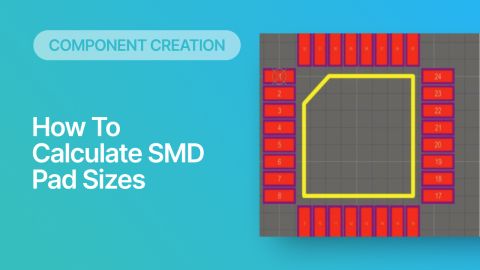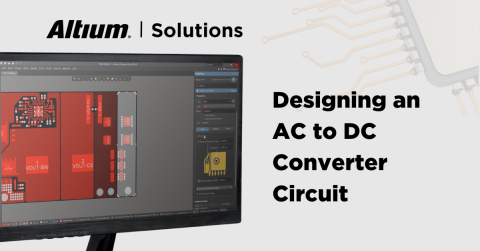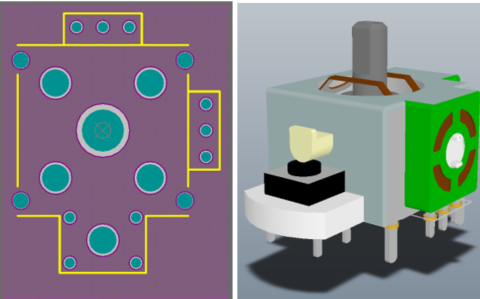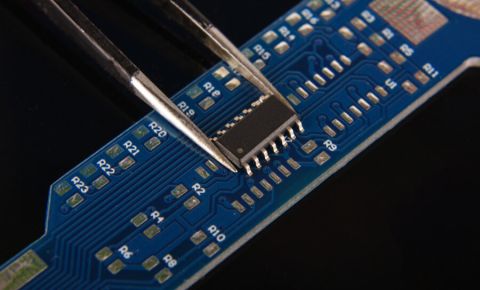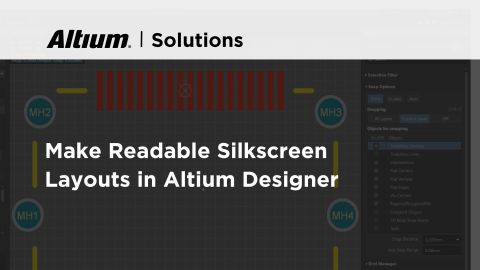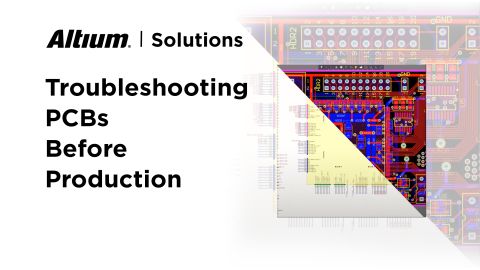Sourcing PCB Military Grade Electronic Components in a Unified Design Environment

Whether you are a procurement officer for the military, a prime contractor, or defense suppliers of electronic components, you’ll face a number of obstacles when sourcing components for electronic defense systems. Given the component shortages and potential for counterfeiting in the components market, military PCB components cannot be procured from just any company. Any component for a military grade electronic components system must meet rigorous quality standards and be traceable back to a compliant manufacturer or distributor. Working with Altium Designer ensures you will have full control over your supply chain when preparing for manufacturing and assembly.
ALTIUM DESIGNER
A unified PCB design package with the best data and supply chain management tools in a single interface.
If you take some time to look for PCB components, you’ll find that there are plenty of manufacturers and distributors to choose from. Unfortunately, defense contractors and military procurement officers cannot just choose any components for use in their electronic systems. Defense acquisition rules and military standards restrict the components you are allowed to use in military electronic systems only to those that meet the highest quality standards and can be traced back to a verified manufacturer.
You’re PCB design and data management software should help you navigate a complicated procurement landscape. Any component distributor or manufacturer you choose to work with will need to be properly registered in SAM, the primary federal contractor information system. Distributors and procurement officers must also comply with ITAR regulations, adding to the already complicated legal landscape.
Sourcing Military PCB Components
Although military systems tend to be of the highest quality and include advanced components that are not found in consumer electronics, these components are not necessarily unique. Most likely, you’ll need to source components from a number of distributors in order to meet your design requirements. Component shortages and the possibility of procuring counterfeit components add to the complexity and underscore the need for sourcing software that streamlines the procurement process.
Given these stringent sourcing requirements, how can military systems designers ensure they remain in compliance? This is where your PCB design software becomes critical. Your PCB design software should include tools that allow you to limit your component sources to only registered and verified component manufacturers without forcing you to use a third-party software package.
Why You Need Supply Chain Visibility in Your Design Software
Aside from staying in compliance with a complicated set of procurement regulations, PCB designers that have supply chain visibility can avoid procurement problems that cause delays in delivery. Taking advantage of supply chain visibility during the design phase helps you include only compliant, sourceable components in your design. This also helps you to choose suitable replacement components in the event that your first choices are unavailable.
- Supply chain visibility helps you design your board around available components. You can avoid getting caught in the trap of unavailable, non-compliant components and avoid unnecessary redesigns.
See how supply chain visibility ensures component availability during design.
- With auditors always keeping their eye on costs, you need supply chain visibility tools that aid design-to-cost. See how you can control costs with real-time supply chain visibility.
- The compliance landscape for component sourcing places severe restrictions on allowed components, but your component libraries can help you keep up with supply chain changes. See why you need component libraries that update in real-time.

Real-time supply chain control in Altium Designer
Standards on Military PCB Components
Aside from the procurement landscape surrounding military PCB components, designers and procurement officers must remain aware of standards affecting the quality, traceability, and consistency of military-grade components. The military grade electronic components distributors and manufacturers are well-defined in the AS9100 standard for quality management. When it comes to various classes of components, there are other important standards that designers, contractors, and procurement officers must consider.
How Military PCB Components Standards Affect Design
The MilSpec standards were developed to specify and improve interoperability among critical defense systems, including electronic systems. The various MilSpec standards specify design, manufacturing, and deployment practices for military systems and equipment. When considering the deployment landscape and design requirements on new devices, electronics designers should familiarize themselves with the relevant aspects of MilSpec.
When your PCB design software runs on top of a rules-driven design engine, you can specify various design requirements under MilSpec as design rules within your design software. This allows you to check your layout as you design your board, identify design errors, and implement redesigns as needed to ensure compliance.
- When choosing PCB design software, you should remain aware of the difference between constraint-driven design and rules-driven design.
Learn more about distinguishing constraint-driven design from rules-driven design.
- Working in a unified design environment helps you quickly generate documentation that communicates your design intent and helps you stay compliant.
See how you can make your design intent clear with compliant documentation.
- The rules-driven design engine in Altium Designer allows you to adapt many aspects of the software to your particular application, helping you stay compliant with important design standards. Learn more about customizing Altium Designer.

Preparing your project releases in Altium Designer
Altium Designer: Integrating Design and Supply Chain Visibility
Even civilian designers and hobbyists are not immune to supply chain challenges. Remaining fully compliant with defense performance standards and procurement regulations takes design tools that integrate directly with your supply chain management tools. While other design platforms force you to use a third-party database tool that does not integrate into your design software, Altium Designer has engineered its software to integrate these two critical aspects of PCB design and manufacturing.
Let Altium Designer Ease Your Compliance Pains
Working in an integrated design environment means that your design features are built to pass data between each other in a consistent language. You won’t have to purchase multiple programs from different vendors and force them into a single workflow. Instead, Altium Designer unifies important design and sourcing features under one roof, improving your productivity and compliance.
- The component management and search features help you narrow down to registered, compliant military PCB component suppliers and quickly include these components in your layout. Learn more about component management in Altium Designer.
- Prime contractors will likely be subject to contractor manpower and engineering change order reporting requirements. Altium Designer helps you keep meticulous documentation and prove your compliance. Learn more about generating consistent documentation in Altium Designer.
- Altium Designer has set the new standard for PCB design in the consumer electronics and defense industries. Learn more about Altium Designer’s solutions for the defense industry.
Altium Designer’s integrated design interface is unmatched by other PCB design platforms. If you need assistance working with this type of design software, Altium will be there with the resources you need. You’ll have instant access to the AltiumLive forum, design tutorials, webinars, and podcasts with industry experts, and an extensive knowledge base. No other PCB design software company offers this many resources for success.
Altium Designer is the only PCB design platform that unifies sourcing, layout, simulation, and verification for military electronic systems in a single environment. You can remain confident that your military grades components are sourced properly and that your board meets strict military-grade performance requirements. It’s time to invest in the best circuit board design package on the market: make the switch to Altium Designer.



